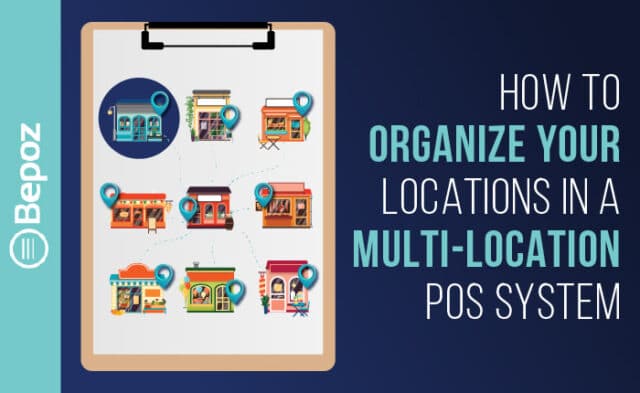How to Organize Locations in a Multi-Location POS System
Running earnings and inventory reports is a frustrating ordeal with most systems. Managers often have to log into each location separately to run reports. Any aggregate reporting then has to be done on their own, which is time consuming and creates more room for error than any business can absorb. Watch the video below as Tim walks us through Bepoz’s easy solution to this problem. Our multi-location system allows you to easily run reports based on the information you need. You can choose to run reports per revenue center, per building, per register, per region and more.
Organize Your Store Locations by Venue, Stores and Tills.
We sort your business into three different areas: venue, stores and tills. Venue refers to your building’s business. For example, a hospital would be one venue. Some businesses have multiple venues, like university campuses or restaurant chains. Store refers to the locations within that venue. A hospital may have a gift shop, a cafeteria and multiple food carts. Each of these would be considered a store. Till refers to each register. You may have a cafeteria or retail space that has two or more registers, or tills. Bepoz can organize your data based on individual till through full venue.
That’s not all. You may want to organize your business by region or category. Perhaps you want a report that only shows sales within a specific region of stores, just the bars within all of your restaurants. Maybe you only want to see retail establishments and no food service. Bepoz can sort in any way you need.
Running Reports with a Multi-Location POS System
Running reports is important for your business to function at the top of its game. You need to regularly see which areas are booming and where a boost in business is needed. You can also see inventory reports, which show you quantities on hand, ordering levels and what items are selling well in various venues. You can also prevent errors or track down irregularities when you run reports on individual tills.
The best part of this feature is that it is part of the Bepoz Point-of-Sale system. You can use Bepoz for placing orders, creating menus, managing inventory, customer transactions and much more.
Do you have questions about how Bepoz can work for you? Contact us today and we will talk to you about location organization and so much more.
Learn More
Manage Businesses With Multiple Locations
Frequently Asked Questions about POS Systems
Video Transcription
Hey, this is Tim with Bepoz Enterprise: Point-Of-Sale Systems. It’s always important to note at the beginning of this video, that Bepoz can manage both food service, restaurants, bars, and retail operations, all in one system, and has many modules to do lots of different things. We’d love to talk to you about your operation from an enterprise perspective and how we can help you. This video, specifically, is to talk about how we organize locations when you have a multi-location operation.
Bepoz has this concept of venues, stores, and tills. A ‘venue’ is often a campus or a building, so this would be a single location. Now, some of our customers might have a single location that has 14 stores within it, 14 revenue centers, right? Let’s say one of our larger customers might have a single location that has 20, 30, or 50 locations, and then they might have 10 or 15 or 20 of those. You can have a venue – and that’s a building or again, a campus of some sort – where all of those revenue centers are all grouped together. Then we also have a ‘store’ which is a revenue center within that venue. Then we have ’tills’ or registers that are within individual stores. Bepoz manages all of those.
When you’re running reports in your enterprise point-of-sale system, we can then drill down, and almost every report in Bepoz is filterable by the venue or the store, or both. So, I can drill down to look at all of the stores and all of the revenue centers or all the venues, or I could look at them as a group or individual, and then they could also be regionalized, so I could have regional venues or store types – so I could have types of stores: “these are all bars”, “these are all restaurants”, “these are all retail outlets”, and so forth. Whatever different kinds of operations that you have, and all of that could be managed in that way.
You could then look at your operations in a very granular way or in many different ways. So, because of the regional aspect of this, you could also add another layer on there, and let’s say you were a franchise group and you have certain franchises, and then those franchises, we could report franchise by franchise, or region by region; and then we could give individuals authority within our system, based on any of those different levels. So, they could have permission to a certain level, but not see anything outside of their group. That could be: store group, store, venue, or venue group, or region.
Many different ways to slice and dice the data. We could talk about this for a long time. If you’d like to learn more, please feel free to call us. We’d love to talk to you. You can call the number at the top of our screen or click the link below.

